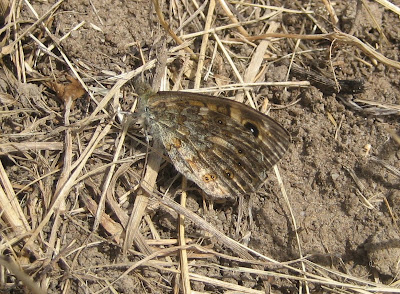We've been away for the weekend and turned the computer off in our absence. Luckily maybe, because look who's been examining our email.
It isn't a terribly exciting guest (perusal of the micro guide continues - see Update below), but our encounter says something about photography, computers and moths. Above is the visitor taken close-up on micro-mode without flash. Below, behold it with the flash turned on.

It had moved by then to examine another icon, of a photograph of my mother-in-law. I think you can just make out her name, Dilys, on the icon label in the gloomy background to the left of the moth. Update: it's a Brown House Moth, info courtesy of my wise and very helpful commentor Ray who, alarmingly for the UK's tourism industry, is familiar with them in B&Bs. I say 'alarmingly' because these are among the few moths whose genuinely bad habits cast a shadow over the whole and almost entirely blameless moth world. They eat books, cashmere sweaters, socks...

It had moved by then to examine another icon, of a photograph of my mother-in-law. I think you can just make out her name, Dilys, on the icon label in the gloomy background to the left of the moth. Update: it's a Brown House Moth, info courtesy of my wise and very helpful commentor Ray who, alarmingly for the UK's tourism industry, is familiar with them in B&Bs. I say 'alarmingly' because these are among the few moths whose genuinely bad habits cast a shadow over the whole and almost entirely blameless moth world. They eat books, cashmere sweaters, socks...

















































